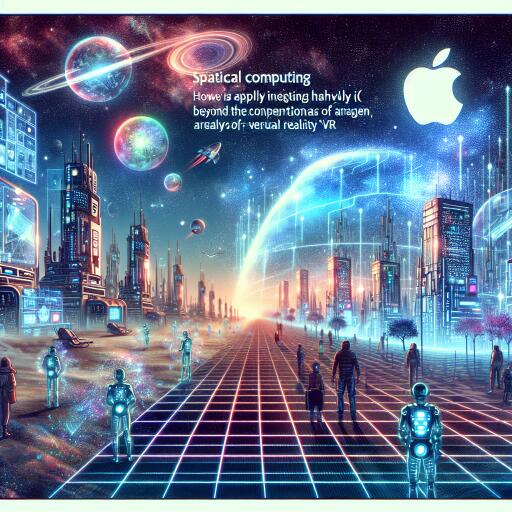Beyond AR and VR: Why Apple is Betting Big on Spatial Computing
In an era where digital innovation seems boundless, Apple is steering the conversation towards a revolutionary concept: spatial computing. This shift from the familiar realms of Augmented Reality (AR) and Virtual Reality (VR) to the broader and more immersive world of spatial computing may initially appear nuanced, but it represents a transformative vision for the way we interact with our digital environments.
Spatial computing transcends the idea of merely overlaying digital imagery onto the real world or immersing users in a fully virtual space. It encompasses the ability of devices to perceive, understand, and react to the physical world in real-time. This includes not only augmenting our visual perception with digital content but also enhancing our interactions through spatial awareness, gesture recognition, and tactile feedback. This methodology promises to create experiences that are not only immersive but also intuitive, fundamentally changing our engagement with technology.
The journey towards spatial computing is powered by advancements in several key technologies, including computer vision, artificial intelligence (AI), and sophisticated sensor arrays. Apple’s strategic moves, such as the acquisition of the AR startup Vuzix and rumors of an advanced mixed reality headset dubbed “Vision Pro”, signal a strong commitment to spearheading development in this burgeoning field.
The Broad Spectrum of Spatial Computing Applications
While the gaming industry often emerges as the front-runner in adopting AR and VR technologies, the scope of spatial computing stretches far beyond entertainment. Envision a world where:
- Education is transformed through immersive, interactive learning environments.
- Healthcare professionals can perform complex procedures with enhanced precision, guided by real-time anatomical visualizations.
- Designers and engineers can manipulate 3D models of their creations as if they were tangible objects in their hands.
However, the path to these futuristic applications is fraught with challenges. The creation of genuinely immersive, seamless experiences demands leaps in both hardware capabilities and software versatility. Furthermore, as these technologies become more integrated into our daily lives, issues such as privacy and the risk of digital saturation must be carefully navigated.
Apple’s Strategic Vision for Spatial Computing
Apple’s foray into spatial computing indicates a vision that extends beyond merely marketing a new product category. Their aim seems to be establishing a comprehensive ecosystem that melds the digital and physical realms into a cohesive user experience. This ecosystem could span various devices and services, including sophisticated hardware like the “Vision Pro”, development platforms such as ARKit, and spatially enhanced versions of mainstream applications, including Maps and FaceTime.
The trajectory of spatial computing will be shaped by a multitude of factors: user acceptance, the development of compelling applications, and the resolution of existing technological constraints. Apple’s strategic positioning places them at the forefront of this emerging technology’s evolution. While it remains to be seen whether their ambitious vision will materialize, the direction in which human-computer interaction is moving is unmistakably towards a more spatially integrated future.
As the boundaries between the digital and physical worlds continue to blur, the promise of spatial computing holds the potential to redefine our experience of reality. With Apple leading the charge, we stand on the precipice of a new era in digital innovation.









